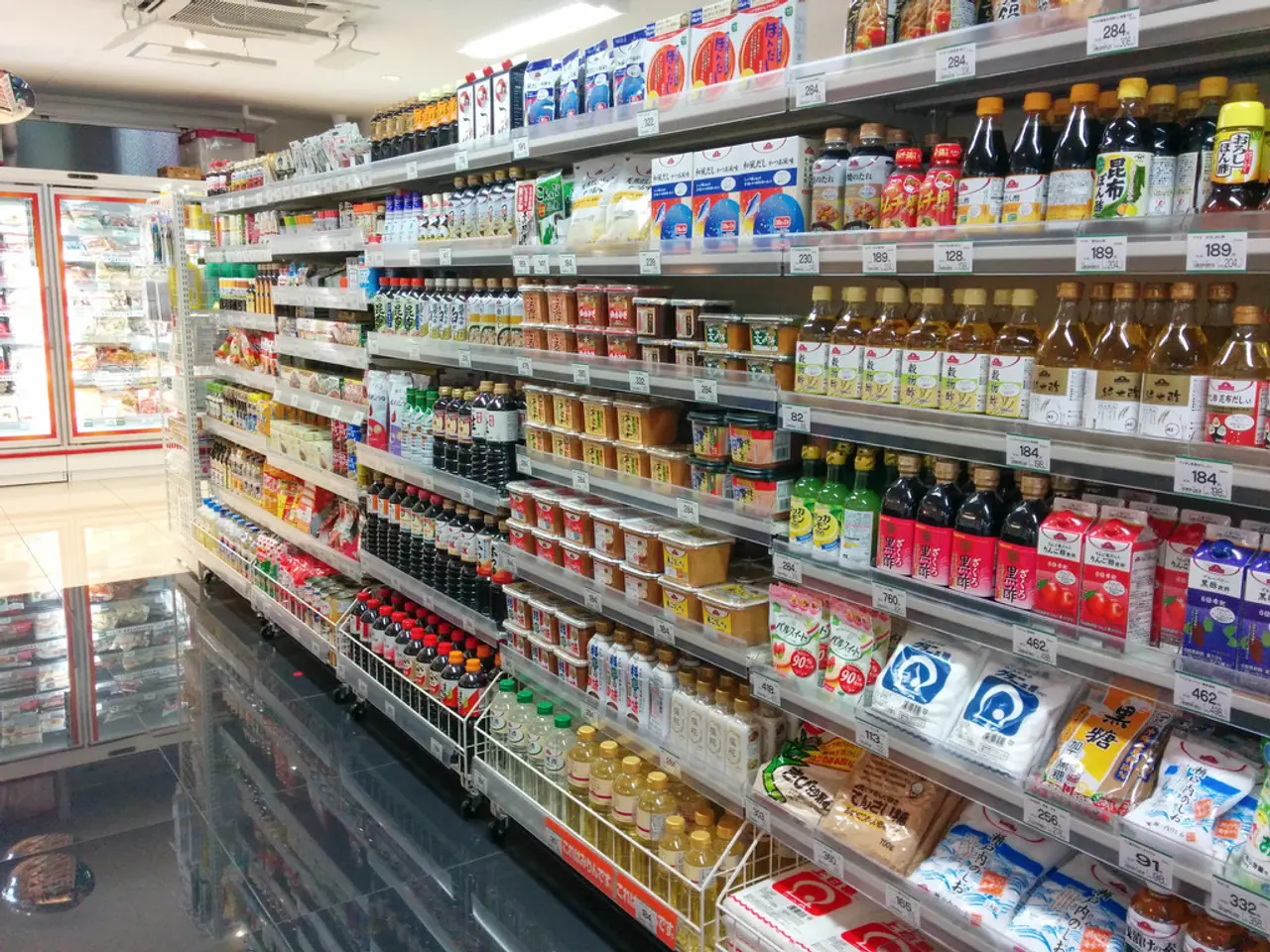Declining July Inflation Hits 8-Year Low at 1.55%, Improving Due to Decreased Food Costs
In a positive development for consumers, India's vegetable prices and overall food inflation have seen a significant decline in recent months. This trend is particularly notable, with food inflation turning negative at around -1.76% in July 2025.
The key factors driving this trend include good harvest and supply conditions, favourable base effects, adequate reservoir levels and buffer stocks, reduced costs elsewhere, and a steady monsoon and robust kharif sowing. These factors have combined to ease upward price pressure and maintain supply, keeping food inflation muted.
Cereals have also declined by 0.1% in the same time frame, while pulses have continued their sequential decline. Retail inflation based on the Consumer Price Index (CPI) cooled to 1.55% in July, making it the lowest year-on-year inflation rate after June 2017.
Experts such as Sujan Hajra, Chief Economist at Anand Rathi Group, and Upasna Bhardwaj, Chief Economist at Kotak Mahindra Bank, believe that this trend will continue in the coming months due to soft food inflation. Bhardwaj also noted that the core inflation softened marginally in July.
Despite these positive developments, there are potential challenges on the horizon. The rollout of 50% tariffs by the US from August 27 could potentially lead to a rate cut in the next monetary policy review in October. Hajra suggests that these tariffs could shave 30-40 bps off GDP growth.
However, Hajra believes that moderating prices alongside resilient real growth remain broadly positive for India's financial markets. Bhardwaj, on the other hand, does not see much room for monetary easing as the medium-term inflation trajectory is skewed above 4%.
Looking ahead, inflation may rise above 4% by Q4 2025-26 due to base effects and demand pressures. However, current conditions and policies support moderated vegetable and food prices for now.
In summary, India's recent sharp fall in vegetable prices and overall food inflation stems from strong agricultural output, stable supplies, and statistical base factors, combined with supportive weather and inventory conditions. While there are potential challenges on the horizon, the current trend is a positive development for consumers and the economy as a whole.
References:
- The Economic Times
- Business Standard
- Livemint
- Financial Express
- Business Today
- The decline in food inflation, notably reaching -1.76% in July 2025, is largely driven by business factors such as good harvest, supply conditions, and reduced costs.
- Experts in banking and finance, like Sujan Hajra and Upasna Bhardwaj, predict that the current trend of soft food inflation will continue in the coming months, suggesting a positive outlook for consumers and the economy.
- A potential challenge in the future could be the implementation of 50% tariffs by the US from August 27, which may shave off 30-40 bps from India's GDP growth, according to Sujan Hajra.
- Despite potential challenges, the current policies and conditions continue to support moderated vegetable and food prices, which is a positive sign for the economy, as acknowledged by both Hajra and Bhardwaj.
- To stay updated on the latest developments in this area, one can subscribe to various business and finance publications like The Economic Times, Business Standard, Livemint, Financial Express, and Business Today.




